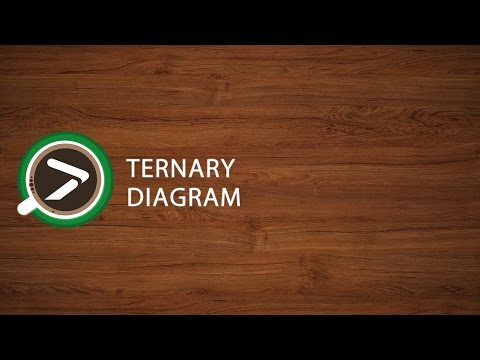Ternary diagram in Excel tutorial
This tutorial shows how to draw a ternary diagram in Excel using the XLSTAT software.
Dataset to create a ternary diagram
The data used in this tutorial correspond to 3 chemical components and the yield obtained for a fourth component that is being tested. A ternary diagram represents within a triangle a set of points that have their coordinates in a three-dimensional space, with the constraint that the sum of the coordinates is constant.
Setting up a ternary diagram
Once XLSTAT is activated, select the XLSTAT / Visualizing data / Ternary diagrams command (see below)/
 Once you have clicked on the button, the dialog box appears.
Once you have clicked on the button, the dialog box appears.
 In the General tab, select the data on the Excel sheet. The third column does not need to be entered as the values are known from the 2 other dimensions and the value of the constant sum that is entered in the Options tab.
In the General tab, select the data on the Excel sheet. The third column does not need to be entered as the values are known from the 2 other dimensions and the value of the constant sum that is entered in the Options tab.
We select the yields in the Objects labels field so that they are displayed on the ternary plot. The Groups option could be used to color observation points based on the group they belong to.
 The Charts tab allows defining a triangle to focus on within the ternary plot. Here we left the default with all minimum values set to 0 and all maximum values set to 1. The number of segments determines how many tick marks and values are displayed along the axes. We decide to display the projection lines, the lines between the axes as well as the labels. The Link the chart to the input data option can be used to update the diagram in real time when the input data is modified.
The Charts tab allows defining a triangle to focus on within the ternary plot. Here we left the default with all minimum values set to 0 and all maximum values set to 1. The number of segments determines how many tick marks and values are displayed along the axes. We decide to display the projection lines, the lines between the axes as well as the labels. The Link the chart to the input data option can be used to update the diagram in real time when the input data is modified.

Interpreting a ternary diagram
After you have clicked on the OK button, the ternary diagram is displayed on a new Excel sheet (because the Sheet option has been selected for outputs).
 It allows to see how the points cover the space and to detect potential zones that should be explored in further experiments.
The following addresses ternary diagrams, with illustration using Excel and XLSTAT.
It allows to see how the points cover the space and to detect potential zones that should be explored in further experiments.
The following addresses ternary diagrams, with illustration using Excel and XLSTAT.
Was this article useful?
- Yes
- No
